
The rise of e-grocery stores: The online sales of food and beverage products
While many sectors still encounter problems and doubts from consumers when selling online, the difficulties met by grocery stores have been even greater since the start of the ecommerce era.
One of the biggest drawbacks of purchasing products online for the customer is not being able to inspect the products themselves. How can you then trust a site enough to buy a pound of apples and be sure that they will arrive in good condition?
Daily shopping habits and the proximity of supermarkets and grocery stores that can be found on virtually any street in the world have held back the online sale of food and beverages... Until now.
The pull of food ecommerce or e-grocery stores lies in the fact that there has always been a need, but only now is the consumer beginning to see clearly how convenient it is, as in the case with the delivery of prepared meals.
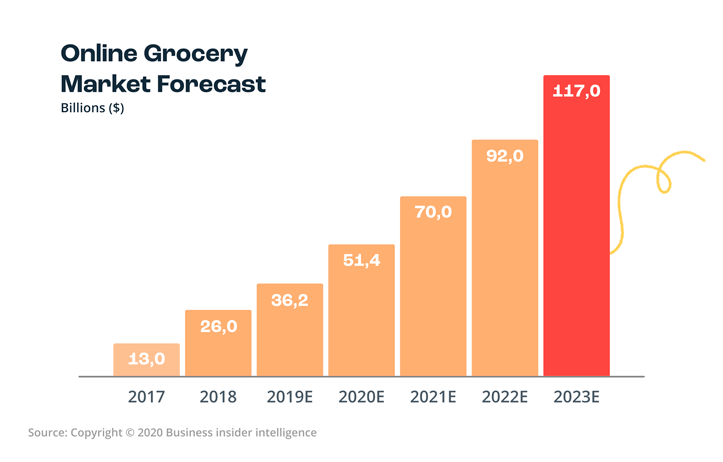
Both large marketplaces, like Amazon and Walmart, and specialty grocery stores have strengthened their online service with three guarantees:
- Ensure the freshness and selection of products (given the global awareness of having to improve our diet for health and environmental reasons).
- Emphasize the convenience of the service (both for once-off orders and in the option to schedule recurring deliveries of products).
- Lower shipping costs (in many stores, the minimum is usually too high for the average cost of a grocery purchase).
Without a doubt, doing your supermarket shopping online is a huge advantage for people who can't access the stores themselves or carry a bulky purchase, or who don’t have a car to drive to a large store.
Additionally, e-grocery stores have also paved the way for lesser known or highly specialized businesses, which can now reach a wider public, such as direct sales from farms, bakeries, or fishmongers, and small brands that offer products that are more difficult to find in big-box stores, such as gluten-free, vegan, or specialty items from different countries.
Since the beginning of the COVID-19 health crisis, several niche foods have experienced an incredible increase in demand, according to Statista:
- Oat milk: +347.3%
- Fresh meat alternatives: +206.4%
- Powdered milk products: +126.3%
- Dried beans: +62.9%
- Canned meat: +57,9%
- Rice: +57.5%
- Chickpeas: +47.3%
- Water: +42%
The growth of food ecommerce through an omnichannel strategy
Food ecommerce is not based on attracting new customers: absolutely everyone buys food.
This is a sector that fills an important need, and so it should not be concerned with demand at the outset, but it should be concerned about the distribution of this demand. As large stores and marketplaces like Walmart, Instacart, Kroger, or Costco have more resources to offer their food ecommerce, smaller businesses need to fight for a foothold in the online world, just as they did in their physical stores.
Customer loyalty is one of the best survival strategies for a grocery store, but in an omnichannel landscape this goal might seem impossible.
→ Is it worthwhile to sell food on Amazon? We tell you how it works here
Luckily, it is possible. When walking through a physical store, customers often carry their cell phones with them. Their shopping list? Most likely, but they're also comparing prices to other sites and reading online reviews and product information they don't see in the store.
Investing in a quality shopping experience leads to customers who are more satisfied with the way they are treated and the trust they place in your products than with constant special offers and discounts. Aren’t they important too? Yes, but the main benefits should not come from there. Many grocery stores only offer special deals to those who are signed up to their members club, which is a good strategy to get to know your customers and build loyalty.
Here are some other very interesting open fronts in the omnichannel experience for food ecommerce sites:
- Option to buy online and pick up in store: This service is very convenient for customers who want to save the time they spend wandering around supermarket aisles.
- Flat shipping rate: Some chains like Walmart offer an annual payment so that you can ship food products to your home from their entire network of physical stores. This way, shipments don’t depend on a single distribution warehouse, and it doesn’t matter if the customer changes their address or moves to another city.
- Scheduling of recurring purchases: Every consumer has certain products that they need more often than others. The ability to order them on a regular basis guarantees that the customer will always have them in their home without having to constantly check the cupboard or refrigerator.
→ Check these out: The best online marketplaces to sell products in Europe
Ecommerce trends in 2020 for food producers and retailers
In South Korea and the United Kingdom, online food sales account for 15% of the total sector. As one of the largest food ecommerce markets, China will grow by 286% until 2022 and the United States by 129%. These are numbers that may grow even more in light of the 2020 health crisis, which has forced many consumers to rely on the delivery of their regular purchases.
This crisis has posed a major challenge to ecommerce sites and especially to the food sector. Faced with a stable, but not as powerful demand as in other industries, supermarkets and grocery stores lack the logistics and delivery network strong enough to meet a high online demand.
Amazon and Walmart continue to lead the Western e-grocery market, but the future may be in local networks that manage to maintain their usual clientele by expanding their delivery capabilities.
It is true that the short and medium-term future poses many challenges: the difficulty of completing deliveries when sanitary measures become increasingly strict and the complexity of managing a catalog of fresh products.
It's easy to keep track of the number of oil bottles in a warehouse, but the number of leeks can be more difficult to control as they are sold by weight and not units.
Grocery brands and stores seeking to make the leap into the digital future will have to start incorporating technologies that have been driving other niches for years.
And these will change consumption habits: smart appliances, like refrigerators and washing machines, will be able to detect which products they’re about to run out of and order deliveries on a regular basis for grocery store items or cleaning products.
Keeping a food catalog up to date and in real time is a challenge that is twice as hard in companies and stores of this type, which must monitor stock and expiration information, as they are perishable goods.
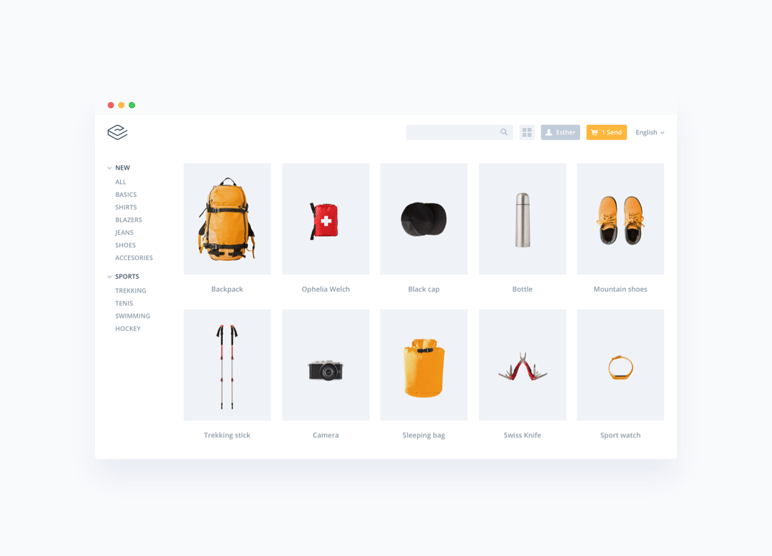
Inventory control systems and Product Information Management (PIM) software are the essential tools for businesses that wish to stay afloat by offering a good online shopping experience.
Let's see why product information is key in food and beverage ecommerce, and how you can improve it to gain confident and satisfied shoppers.
→ Expand your strategy: More ecommerce trends for your business
The importance of food and beverage product information
According to Walmart, the most in-demand categories in e-grocery stores are snacks, drinks, fresh products, and pet food.
If your online store includes all these categories and more, each of them will have different requirements, as the customer doesn’t focus on the same thing when they’re looking at a tomato compared to when they’re deciding on a bottle of wine to buy.
Specialization is very important when developing a catalog of food products, especially now that consumers are increasingly aware of ingredients, additives, compositions, and nutritional value.
→ Your template for any niche: The perfect product information page step by step
Interestingly, while in other ecommerce industries product pictures are the essential component, in online food stores the presentation is very different. The image of the product doesn’t matter as much (just a photograph where the brand and appearance can be recognized will do), as the information and the accuracy of this information.
The more product information your food and beverage pages include, the more confident the user will be and the lower the dropout rate.
You can immediately lose a customer if it's not clear that your cookies contain traces of hazelnut, or if they can't compare the percentage of sugar in different cereals.
In grocery ecommerce, product information becomes more than a valuable resource: it is your passport to a respectable, reliable brand image that brings value to the buyer with quality products and product content.
5 examples of online grocery retail
Although the type of product content and the way it’s laid out on a website or online store depends on each particular case, we will compare a type of food product in different ecommerce formats.
We will take as an example a jar of jam to analyze similarities and recommendations when preparing a good food product information sheet.
Example 1: International supermarket
Tesco is an English chain with stores in the UK, Ireland, Hungary, Thailand and Malaysia.
In their digital catalog design, they show the products prominently featured on a white background: the image of the jar is enough for the customer to recognize the brand they want or identify the flavor of the jam.
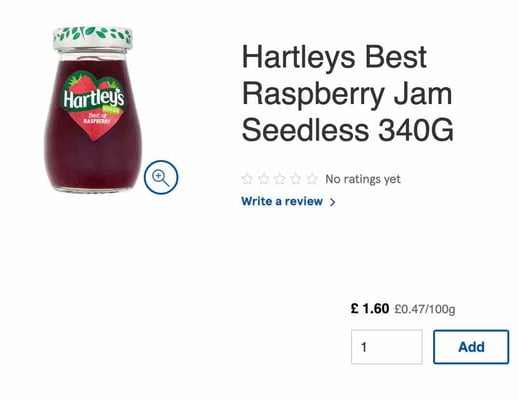
As part of the basic information, we find the brand, flavor, jar size, the ratings given by other buyers, and the price.
When we scroll down, we find more information: the name appears again, the list of ingredients, storage recommendations, and a table with nutrition facts.
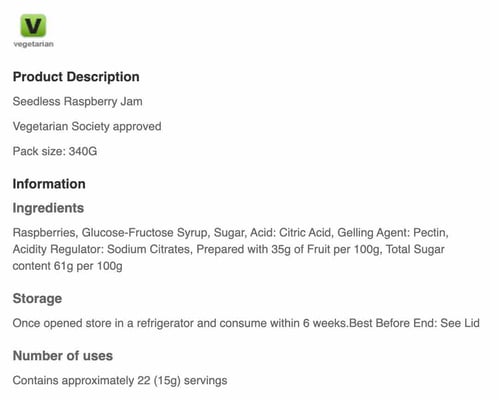
The most interesting product information included by Tesco: the number of servings per jar, the statement that the product is suitable for vegetarians, and a note reaffirming the commitment to constantly review the product information and that it releases the store from any responsibility in case of any error.
Example 2: National supermarket
Waitrose is a supermarket chain in Britain that is part of the John Lewis retail group.
The main area of the product page highlights the same information as in Tesco: a clear image with a white background, brand, flavor, weight, ratings, and price.
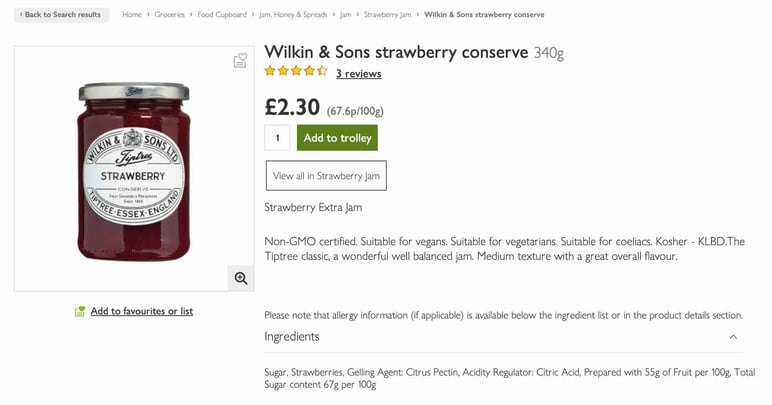
The product information below that is not very extensive, but it includes some extra information, such as the statement that it is a non-GM product and suitable for vegans, vegetarians, and people with celiac disease.
Below that, there is more information on ingredients, allergens, nutrition, and origin.
Example 3: International discount supermarket
Lidl is one of the largest discount supermarket chains in Europe.
On its product page, we immediately find some differences, starting with a main area that is wider than the previous ones.
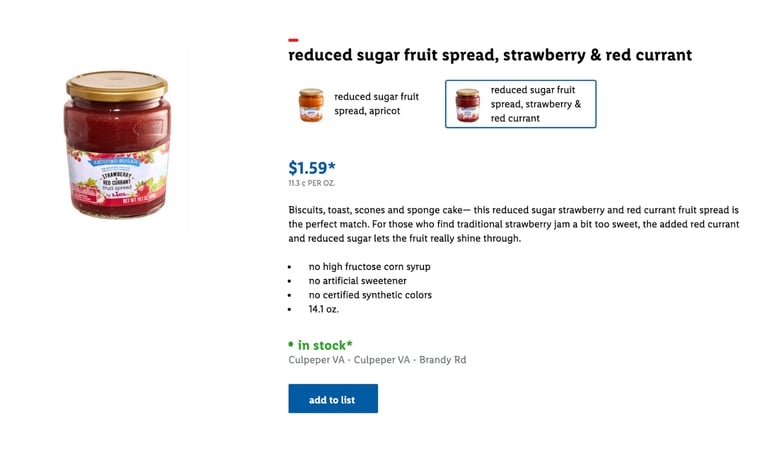
It includes its own, original description of the product, which is always recommended on any ecommerce page. It provides more valuable information to the user in context and helps to position the page in searches.
The rest of the content is not very detailed, and it groups 2 product variants into one tab.
It mentions the availability of the product, but only as an estimate that they can’t guarantee in all physical stores. It is difficult to control stock when it comes to food products and you’re a large supermarket chain with several stores, but the ability to consult this in local areas would ensure a good omnichannel experience.
Example 4: Luxury grocery store
Fortnum & Mason is one of the most iconic stores of gourmet food products, founded in London in 1707.
At first glance, its product page for a jam seems to be more complete, including a photograph of the actual product (not just the jar of jam, but also a small amount served in a small bowl).
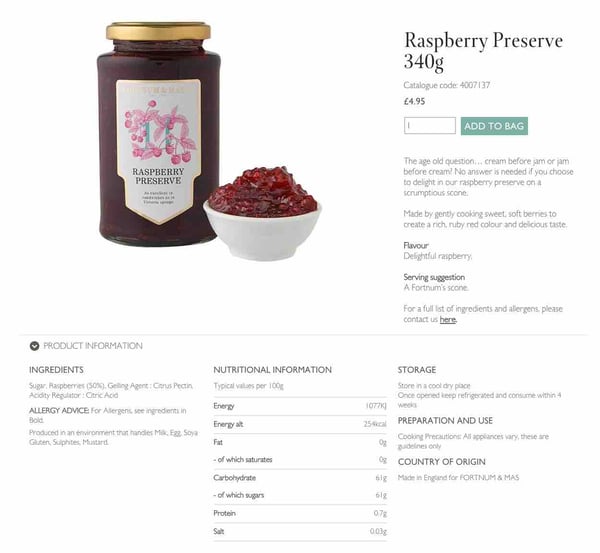
We also see information about the flavor, weight, price, nutritional facts, how to store it, its origin, and even the product’s catalog code.
The product description is brief but includes consumption recommendations that add extra value. Separating ingredients and allergens into two sections can be very useful for buyers who want to quickly identify a component.
Example 5: Organic food store
Finally, Whole Foods is an American supermarket chain with a catalog of organic products.
The product page for this jam includes the basics such as ingredients and nutritional facts (in a drop-down menu), but there are also some differences: more views of the product from different angles, a price finder by zip code, symbols to identify the product’s properties (lactose-free, gluten-free, low sodium, vegan, etc.), and other jams that are shown as suggestions (cross-selling).

Therefore, we could summarize that a good product information page should include as many as possible of the following elements:
- Product image
- Product type and name
- Brand
- Flavor and variants
- Weight or volume
- Price
- Customer ratings
- Ingredients
- Allergens
- Country of origin or manufacture
- Special labels: vegetarian, vegan, organic, bio, gluten-free
- Packaging type
- Storage instructions
- Consumption recommendations
Another interesting element is how your products are organized. How you classify your catalog will make it easier for buyers to find products on your website.
In what category should a jam be included? According to these examples, in "Sweets", "Pantry essentials", or "Breakfast". In other words, there is no single or perfect category tree: it depends on how many products you have, how you want to organize your catalog, and what your shoppers’ most typical searches and queries are.
Conclusion
The corner bakeries and the little boutique wineries of the capitals of the world are not going anywhere. The e-grocery trend is just one more way to expand the food business.
But making shopping easier for those with accessibility difficulties, or in times of public crisis, has proved to be a great advantage of food ecommerce.
Addressing logistical challenges and incorporating management technologies are the steps that grocery stores must take to catch up with other industries and take full advantage of all the possibilities of online commerce.
A solid digital presence is enough to bring a good level of prestige and visibility on the Internet to any store. Start by adapting your catalog to modern demands with a free trial of Sales Layer’s PIM and give your products the freshness and quality they deserve.



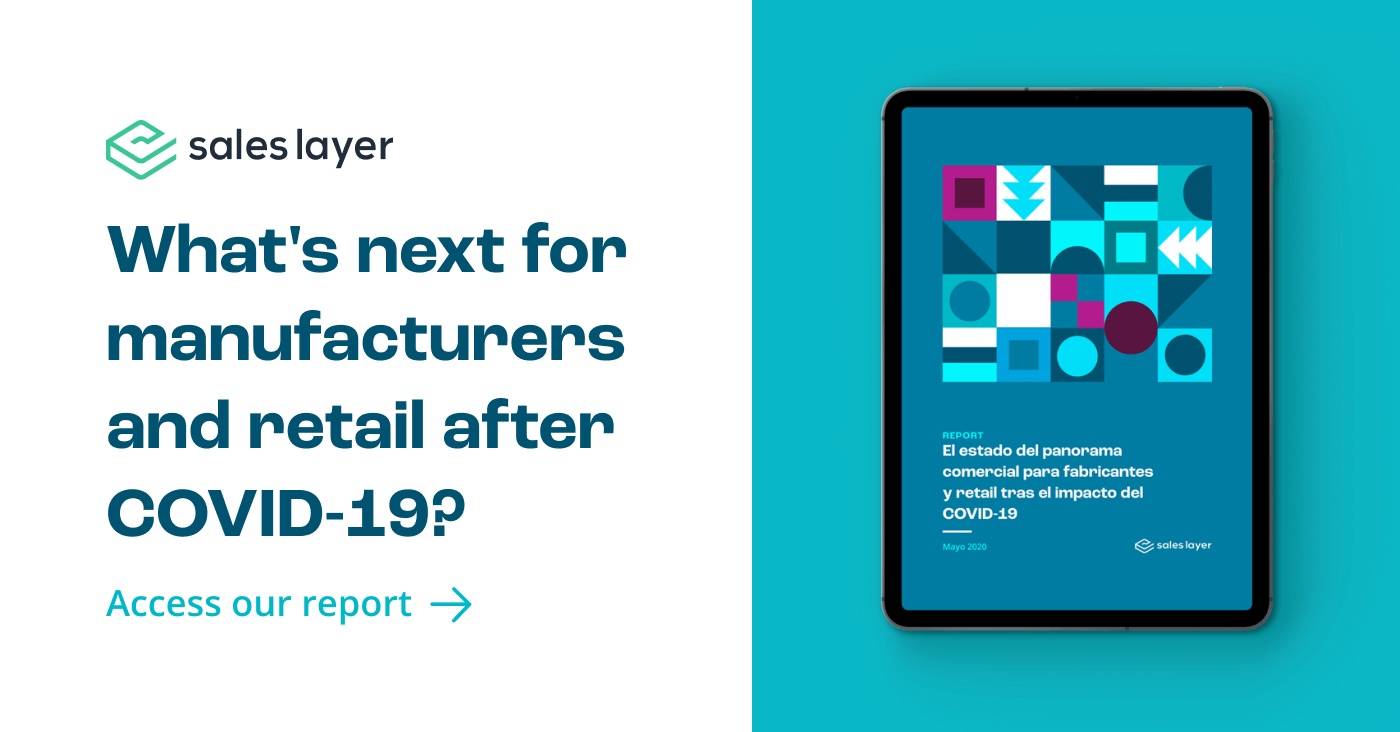


.png?width=520&name=Blog%20Partner%20(1).png)




